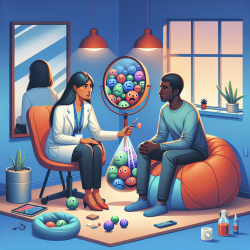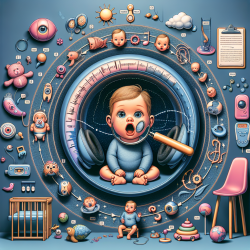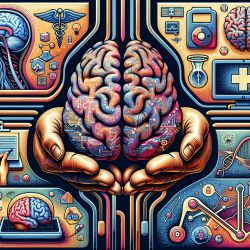Enhancing Skills in Child and Adolescent Psychiatry through Co-Constructive Patient Simulation
In the realm of child and adolescent psychiatry, the intricate dynamics between a child and their caregiver play a crucial role in the therapeutic process. Recent research highlights the innovative use of co-constructive patient simulation (CCPS) as a tool to enhance reflective practice among practitioners. This approach not only focuses on the child-caregiver dyad but also integrates the longitudinal aspects of care, providing a comprehensive framework for understanding and improving patient outcomes.
The Power of Co-Constructive Patient Simulation
CCPS is a learner-centered method that involves participants in the creation and execution of simulated clinical encounters. This model emphasizes the emotional and interpersonal work inherent in child and adolescent psychiatry. By incorporating multiple perspectives, including those of professional actors and facilitators, CCPS encourages practitioners to explore and reflect on challenging clinical scenarios.
In a study involving child and adolescent psychiatry trainees, CCPS sessions were conducted with the inclusion of two patient actors to simulate the dyadic relationship. This setup allowed participants to engage with complex family dynamics and reflect on their professional experiences. The sessions were followed by debriefings, where participants could share insights and learn from each other's perspectives.
Key Themes and Insights
- Reflecting on Dyadic Challenges: Participants noted the challenges of role reversal and individuation within parent-child relationships. The simulations provided a safe space to explore these dynamics and understand their impact on the therapeutic process.
- Centering the Child and Allying with the Parent: The simulations emphasized the importance of balancing the needs of the child and the parent. Participants learned to treat the family system as a whole while prioritizing the child's needs.
- Embracing Ambivalence: The sessions highlighted the ambivalence present in parent-child relationships and the importance of acknowledging and exploring these mixed feelings to foster understanding and healing.
- Longitudinal Narratives: By following cases across multiple sessions, participants gained insights into the evolving nature of family dynamics and the importance of continuity in care.
Implementing CCPS in Practice
For practitioners looking to enhance their skills in child and adolescent psychiatry, incorporating CCPS into their training can be highly beneficial. This approach not only fosters reflective practice but also helps practitioners develop empathy and understanding of complex family dynamics. By engaging in CCPS, practitioners can improve their ability to create holding environments that support both the child and the caregiver.
As the field of child and adolescent psychiatry continues to evolve, embracing innovative training methods like CCPS can lead to better outcomes for young patients and their families. Practitioners are encouraged to explore this model further and consider its integration into their professional development.
To read the original research paper, please follow this link: Family dyads, emotional labor, and holding environments in the simulated encounter: co-constructive patient simulation as a reflective tool in child and adolescent psychiatry training.










